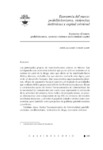
Please use this identifier to cite or link to this item:
http://ricaxcan.uaz.edu.mx/jspui/handle/20.500.11845/659Full metadata record
| DC Field | Value | Language |
|---|---|---|
| dc.contributor | 482844 | es_ES |
| dc.coverage.spatial | México | es_ES |
| dc.creator | Vázquez Valdez, Jorge Alejandro | - |
| dc.date.accessioned | 2018-10-24T18:40:06Z | - |
| dc.date.available | 2018-10-24T18:40:06Z | - |
| dc.date.issued | 2018-01 | - |
| dc.identifier | info:eu-repo/semantics/publishedVersion | es_ES |
| dc.identifier.issn | 1405-7107 | es_ES |
| dc.identifier.issn | 2395-9576 | es_ES |
| dc.identifier.uri | http://hdl.handle.net/20.500.11845/659 | - |
| dc.identifier.uri | https://doi.org/10.48779/aq08-rp55 | - |
| dc.description | The most active drug trafficking groups in Mexico have configured a criminal economy not only dependent on the chain value of drugs, but also as a system branched out towards a variety of criminal activities including those threatening a dignifying life therefore human development. Their internal organizational rearrangements, outward expansion, and their activity plots beyond the Mexican borders, lead to consider them as part of the Transnational Criminal Networks. In the need to understand this overturn representing the evolution from the basic and plain drug trafficking, it is precise to measure the component as TCN in the Mexican neoliberal framework, and tackle the role of the United States of America as consumer, but also as promoter of prohibitionist and punitive policies. | es_ES |
| dc.description.abstract | Los principales grupos de narcotraficantes activos en México han configurado una economía criminal que ya no sólo se sostiene en la cadena de valor de la droga, sino que ahora se ha ramificado hacia delitos diversos, incluidos los que atentan contra la vida digna y por ende el desarrollo humano. Sus reacomodos organizacionales internos, el tipo de expansión hacia el exterior y el tinglado de actividades que realizan dichos grupos más allá de las fronteras mexicanas, llevan a considerarlos parte de Redes Transnacionales de Criminalidad. En la necesidad de comprender este vuelco que representa la evolución de la actividad del simple y llano tráfico de estupefacientes, es preciso dimensionar este componente de las RTC en el marco del modelo neoliberal mexicano, y abordar el papel de Estados Unidos como consumidor, pero también como propulsor de políticas prohibicionistas y punitivas. | es_ES |
| dc.language.iso | spa | es_ES |
| dc.publisher | Universidad Autónoma de Aguascalientes | es_ES |
| dc.relation | https://revistas.uaa.mx/index.php/caleidoscopio/article/viewFile/917/885 | es_ES |
| dc.relation | https://revistas.uaa.mx/index.php/caleidoscopio | es_ES |
| dc.relation.uri | generalPublic | es_ES |
| dc.rights | Atribución-NoComercial-CompartirIgual 3.0 Estados Unidos de América | * |
| dc.rights.uri | http://creativecommons.org/licenses/by-nc-sa/3.0/us/ | * |
| dc.source | Caleidoscopio - Revista Semestral de Ciencias Sociales y Humanidades, Enero-junio 2018 | es_ES |
| dc.subject.classification | HUMANIDADES Y CIENCIAS DE LA CONDUCTA [4] | es_ES |
| dc.subject.other | Transnacionales de Criminalidad | es_ES |
| dc.subject.other | prohibicionismo | es_ES |
| dc.subject.other | neoliberalismo | es_ES |
| dc.subject.other | traficantes de droga | es_ES |
| dc.subject.other | economía criminal | es_ES |
| dc.subject.other | Transnational Criminal Networks | es_ES |
| dc.subject.other | prohibitionist | es_ES |
| dc.subject.other | neoliberalism | es_ES |
| dc.subject.other | drug trafficking | es_ES |
| dc.subject.other | riminal economy | es_ES |
| dc.title | Economía del narco: prohibicionismo, violencias sistémicas y capital criminal | es_ES |
| dc.title.alternative | Economy of narco: prohibitionism, systemic violence and criminal capital | es_ES |
| dc.type | info:eu-repo/semantics/article | es_ES |
| Appears in Collections: | *Documentos Académicos*-- UA Psicología | |
Files in This Item:
| File | Description | Size | Format | |
|---|---|---|---|---|
| 917-1350-1-SM.pdf | 145,06 kB | Adobe PDF |  View/Open |
This item is licensed under a Creative Commons License
